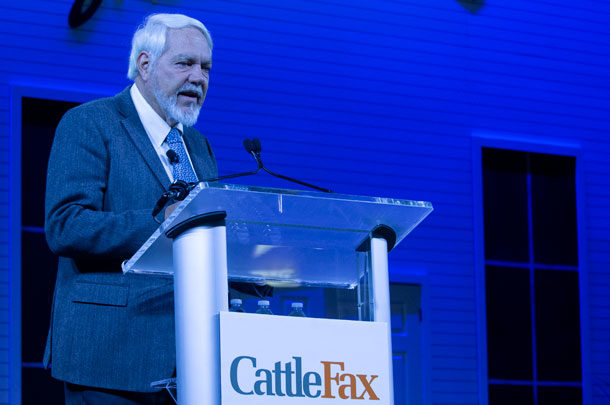Cooler ocean waters off of the Chilean coast of South America, and even up to California, are “precursors of rapid development of La Nina,” Douglas said to those producers at the National Cattlemen’s Beef Association (NCBA) Cattle Industry Convention in San Antonio. La Nina patterns for the U.S. usually mean dryness and cold for Plains regions and the South. But a warming pattern follows with less precipitation in many areas of the country.
Sea surface temperature runs done over the past few months have been dropping in Pacific Ocean regions to levels not seen since 2013.
“All of the model runs are showing steady decline in sea surface temperatures,” Douglas said. “You know right away that our weather patterns are going to be quite different than what we’ve seen in the last five years.
“Than what La Nina does, it brings more cold to the midsection of the country,” said Douglas. The National Oceanic Atmospheric Administration, he added, forecasts a full La Nina arrival in the U.S. by July.
La Nina has already begun leaving a footprint across the globe. Australia remains in dire need of moisture to reduce stressed terrain, Douglas said. With warmer La Nina patterns coming below the equator and moving back toward the dateline, precipitation should develop to help out Down Under.
“This is the thing that’s going to turn weather conditions in Australia around. The constant El Nino since 2014 is why they’ve had such bad drought, and with development of La Nina, they think they’ll get more moisture.”
Brazil, meanwhile, will have changing moisture patterns to help its soybean crop, and Argentina will have green conditions too.
As for the spring forecasts, Douglas predicted “below normal temperatures from Montana to the northeast section of the U.S. The Southwest, on the other hand, as that ridge starts developing, will be very warm. And notice how dry it is from Southern California to the Southern Plains. Winter wheat areas are in a marginal situation, and they may not have a good crop this year.”
In the Southeast, the Bermuda high is going to stay strong, pumping up moisture into the region. “Still more moisture will come up through the Mississippi Valley up into the Ohio Valley,” he said. “But it stays dry through the Dakotas, again very different than last year.”
“But the real problem is we have a ridge developing from the Baja California towards Texas, which tends to cut off moisture from the southwest to Texas,” he said. “La Nina is typically dry for Texas, so our main concern is for Texas.”
Much of the country will be in drier and hotter weather this summer, especially the West and High Plains. Upper Plain regions may stay normal with good precipitation thanks to some relief out of the Atlantic from the east, Douglas said.
“We see the same pattern we’ve had for quite a few years, with quite good moisture for the Corn Belt. We don’t have a whole lot of concern for Corn Belt, with some good temperatures there. But from July through August, the coolness of this La Nina doesn’t develop until August. So not much will be cool in June and July.” ![]()
PHOTO: Dr. Art Douglas addresses attendees at the 2020 NCBA convention in San Antonio. Photo by Cassidy Woolsey.

-
David Cooper
- Managing Editor
- Progressive Cattle
- Email David Cooper








